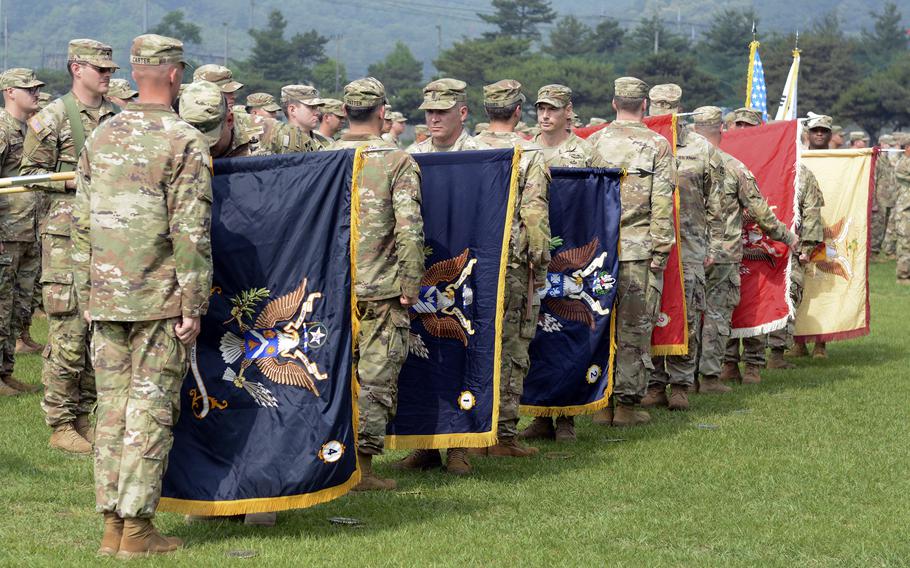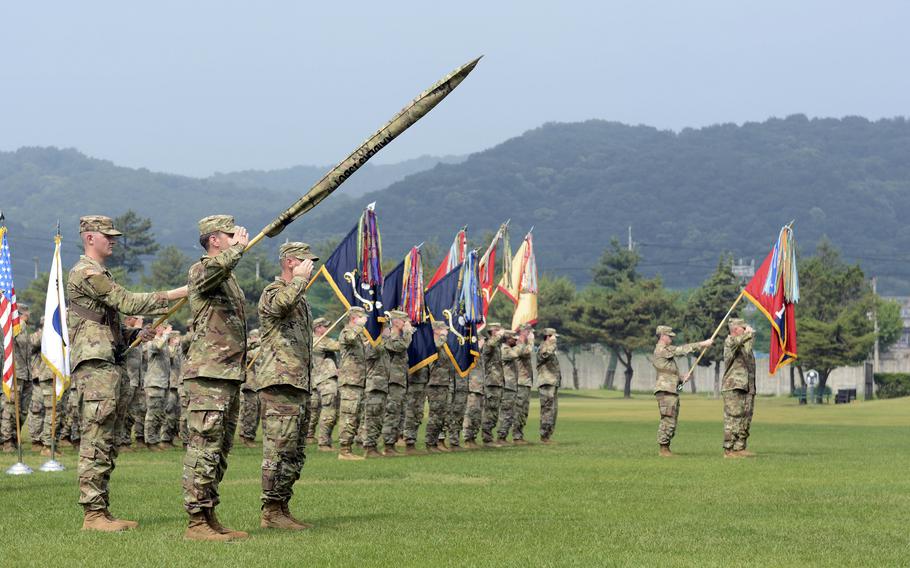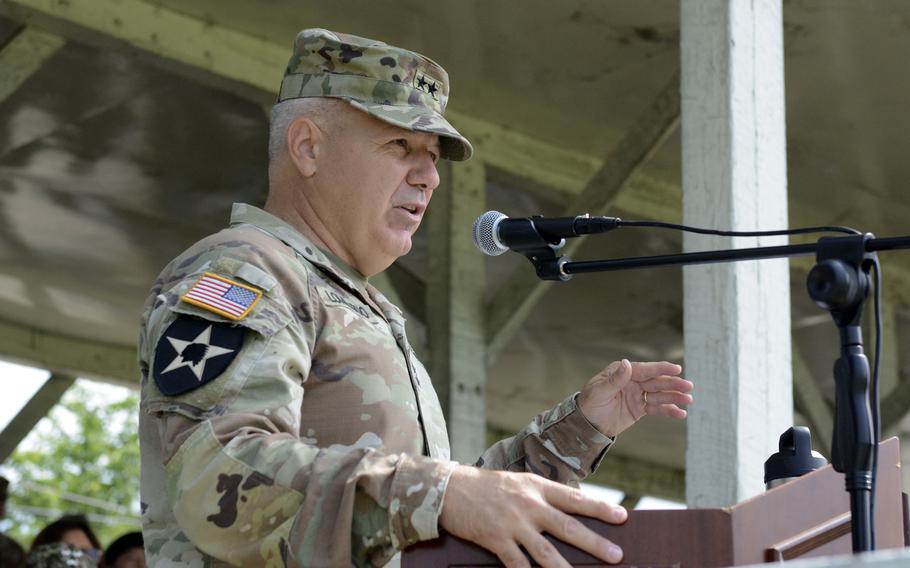
Soldiers from the 1st Stryker Bridge Combat Team, 4th Infantry Division replace troops from 1st Stryker Brigade Combat Team, 7th Infantry Division during a transfer-of-authority ceremony at Camp Casey, South Korea, on June 18, 2025. (Trevares Johnson/Stars and Stripes)
CAMP CASEY, South Korea — About 3,500 U.S. soldiers formally took responsibility for the Army’s mission to deter North Korea during a ceremony Wednesday on this base roughly 15 miles from the border with the communist regime.
The 1st Stryker Brigade Combat Team, 4th Infantry Division, based at Fort Carson, Colo., officially began its nine-month rotation to South Korea during a transfer-of-authority ceremony on Camp Casey’s Indianhead Field, attended by about 250 people.
The unit replaces the 1st Stryker Brigade Combat Team, 7th Infantry Division, which arrived in October from Joint Base Lewis-McChord, Wash.
The Army deploys a rotational unit to South Korea every nine months to support the 2nd Infantry Division’s mission of helping to defend the South from North Korean aggression. The division is headquartered at Camp Humphreys, the largest U.S. military base overseas, about 40 miles south of Seoul and roughly 65 miles south of Casey.

Soldiers from the 1st Stryker Bridge Combat Team, 4th Infantry Division replace troops from 1st Stryker Brigade Combat Team, 7th Infantry Division during a transfer-of-authority ceremony at Camp Casey, South Korea, on June 18, 2025. (Trevares Johnson/Stars and Stripes)
The outgoing Stryker brigade’s commander, Col. Christopher Nunn, said his rotation’s biggest challenge was being away from home, but the experience was unique in the Army.
“The brigade has become so much better because of all the opportunities that we had here, such as building relationships with our South Korean army partners,” he told Stars and Stripes after the ceremony. “All of those things have been phenomenal.”
The commander of 2nd ID, Maj. Gen. Charles Lombardo, thanked Nunn’s soldiers for making the division and South Korean forces “more lethal” through joint training.
“You all continue to distinguish yourselves and write yet another great chapter in this storied history of the 2nd Division and your two brigades, respectively,” he said in a speech at the ceremony.
The incoming Stryker brigade’s commander, Col. John Tisserand, thanked Nunn for this “warm welcome and firm handshake on the peninsula.”

Maj. Gen. Charles Lombardo, commander of the 2nd Infantry Division, speaks during the Stryker brigade transfer-of-authority ceremony at Camp Casey, South Korea, on June 18, 2025. (Trevares Johnson/Stars and Stripes)
The 4th ID soldiers began arriving at Osan Air Base, about 35 miles south of Seoul, in late May. Roughly 1,500 U.S. military vehicles, including Strykers, are prepositioned in South Korea and ready for use by rotational units.
Strykers are armored, eight-wheeled vehicles that can transport up to 11 troops and their equipment.
Rotational brigades to South Korea previously consisted of armored units equipped with tanks. The Army replaced them with Stryker brigades in 2021, citing the platform’s greater mobility in South Korea’s mountainous terrain.
During its rotation, the 7th ID soldiers conducted several joint exercises with South Korean forces, including Freedom Shield, a 10-day exercise in March that involved about 19,000 South Korean and an undisclosed number of American troops.
U.S. Forces Korea, which oversees the 28,500 American forces stationed in the country, declined to disclose its troop figures for Freedom Shield, citing operational security concerns.
North Korea regularly criticizes the joint exercises, calling them rehearsals for an invasion.
USFK describes the drills as a defensive measure aimed at deterring North Korean aggression.
The rotational unit’s headquarters at Camp Hovey, next to Casey, reopened Monday following a $2.2 million renovation.